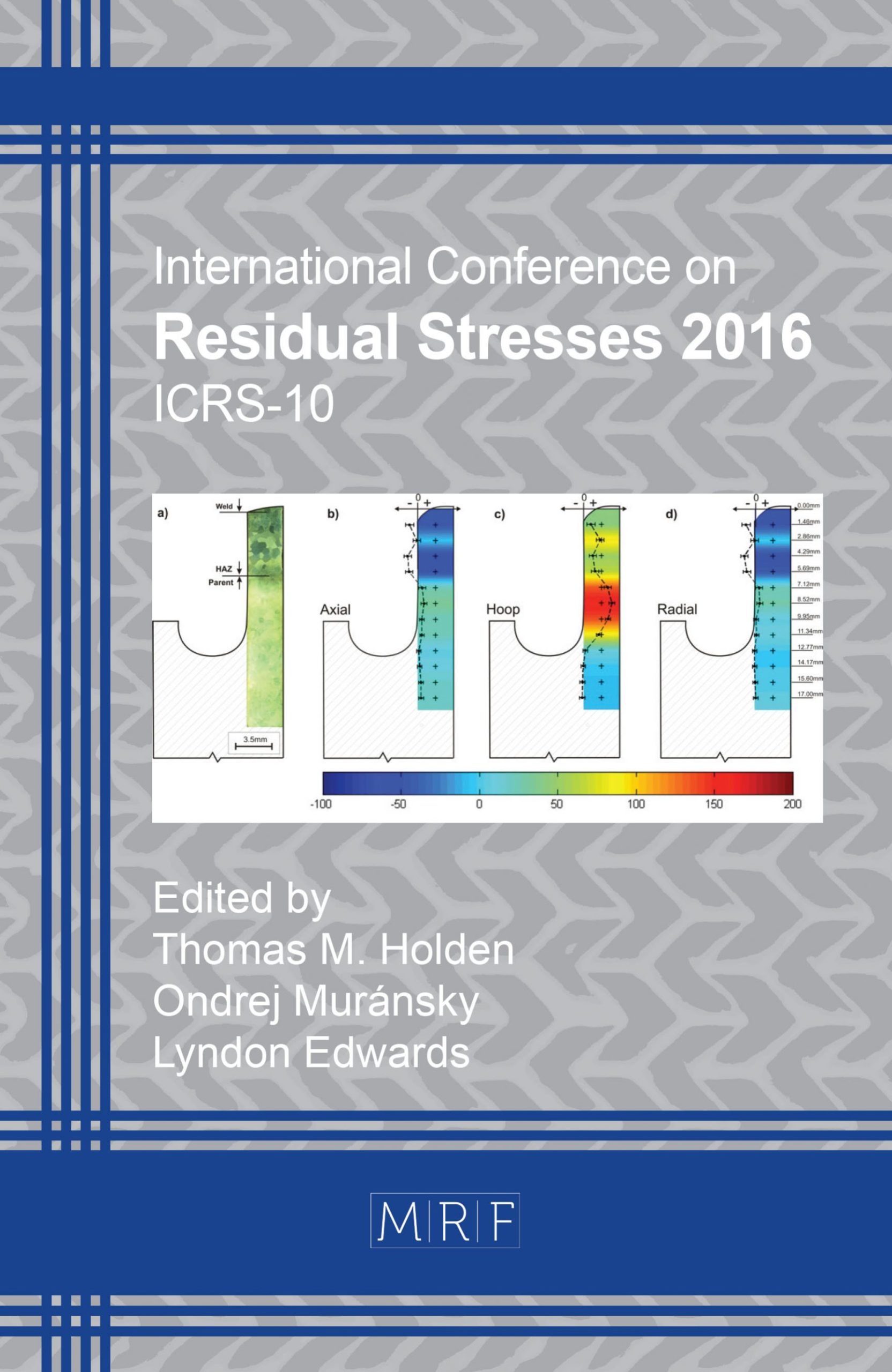Evaluation of the Three-dimensional Welding Residual Stresses Based on the Eigenstran Methodology via X-Ray Measurements
M. Ogawa, T. Ishii
download PDFAbstract. In order to predict the lifetime of welded structures, it is important to evaluate three-dimensional residual stresses nondestructively. However, X-ray diffraction is useful for measuring residual stresses only on the surface. Neutron diffraction is known to be an effective nondestructive method for measuring residual stresses till a depth of several tens of millimeters. Nevertheless, it is not a technique useful for on-site measurements. This is because neutron diffraction is achievable only within special irradiation facilities. In this paper, the authors have proposed a non-destructive method to estimate three-dimensional residual stresses by using X-ray measurements. In this method, the residual stresses for an entire structure are calculated from eigenstrains by using an elastic FEM (Finite Element Method) analysis. Eigenstrains can be estimated from elastic strains measured through X-ray diffraction using inverse analysis. The relationship between the three-dimensional eigenstrains and the surface elastic strains can be obtained if the Young’s modulus, Poisson’s ratio, and dimensions of the structure are known. This study aims to demonstrate the effectiveness of the proposed method on an actual butt-welded plate made of stainless steel SUS430. To evaluate the accuracy of this method, the residual stresses estimated using the method was compared with that measured using X-ray diffraction. In order to maximize the estimation accuracy of this inverse analysis, we considered the eigenstrain distributions along both the welding and thickness directions, as well elastic strains measured on the weld metal were used to estimate.
Keywords
X-Ray Diffraction, Three-dimensional Residual Stresses, Non-destructive, Inverse Problem, Eigenstrain, Weld
Published online 12/22/2016, 6 pages
Copyright © 2016 by the author(s)
Published under license by Materials Research Forum LLC., Millersville PA, USA
Citation: M. Ogawa, T. Ishii, ‘Evaluation of the Three-dimensional Welding Residual Stresses Based on the Eigenstran Methodology via X-Ray Measurements’, Materials Research Proceedings, Vol. 2, pp 329-334, 2017
DOI: http://dx.doi.org/10.21741/9781945291173-56
The article was published as article 56 of the book Residual Stresses 2016
![]() Content from this work may be used under the terms of the Creative Commons Attribution 3.0 licence. Any further distribution of this work must maintain attribution to the author(s) and the title of the work, journal citation and DOI.
Content from this work may be used under the terms of the Creative Commons Attribution 3.0 licence. Any further distribution of this work must maintain attribution to the author(s) and the title of the work, journal citation and DOI.
References
[1] Z. Saternus, W. Piekarska, M. Kubiak, T. Domanski and L. Sowa, Procedia Engineering 136 (2016) 95-100. http://dx.doi.org/10.1016/j.proeng.2016.01.180
[2] Y. Ye, J. Cai, X. Jiang, D. Dai and D. Deng, Advances in Engineering Software 86 (2015) 39-48. http://dx.doi.org/10.1016/j.advengsoft.2015.04.001
[3] A. Skouras, A. Paradowska, M.J. Peel and M.J. Pavier, International Journal of Pressure Vessels and Piping 101 (2013) 143-153. http://dx.doi.org/10.1016/j.ijpvp.2012.11.002
[4] H.J. Kirkwood, S.Y. Zhang, A.S. Tremsin, A.M. Korsunsky, N. Baimpas and B. Abbey, Materials Today: Proceedings 2S (2015) S414-S423.
[5] T. Mura, Micromechanics of Defects in Solids, Martinus Nijhoff Publishers, 1987. http://dx.doi.org/10.1007/978-94-009-3489-4
[6] H. Nakamura, Y. Naka W. Park and H. Kobayashi, Current Topics in Computational Mechanics, ASME PVP, 305 (1995) 49-56.
[7] S. Kubo, Inverse Problems, Baifukan, 1992 (in Japanese).
[8] K. Masuda and H. Nakamura, The Japan Society of Mechanical Engineers, Series-A, 76 (2010) 884-892 (in Japanese).
[9] M. Ogawa, The Japan Society of Mechanical Engineers, Series-A, 79 (2013) 1266-1277 (in Japanese).
[10] M. Ogawa, T. Ishii and S. Furusako, Journal of the Society of Materials Science, Japan, 64 (2015) 932-939 (in Japanese). http://dx.doi.org/10.2472/jsms.64.932
[11] M. Ogawa, International Journal of Computational Materials Science and Engineering, 3 (2014) 1450023. http://dx.doi.org/10.1142/S2047684114500237
[12] M. Ogawa and T. Ishii, Proceedings of the International Conference on Advanced Technology in Experimental Mechanics 2015, (2015) 36.
[13] K. Kumagai, H. Nakamura and H. Kobayashi, The Japan Society of Mechanical Engineers, Series-A, 65 (1999) 133-140 (in Japanese).
[14] Y. Ueda and N. X. Ma, Japan Welding Society, 11 (1993) 189-195 (in Japanese).
[15] P. C. Hansen, SIAM Review, 34 (1992) 561-580.
































